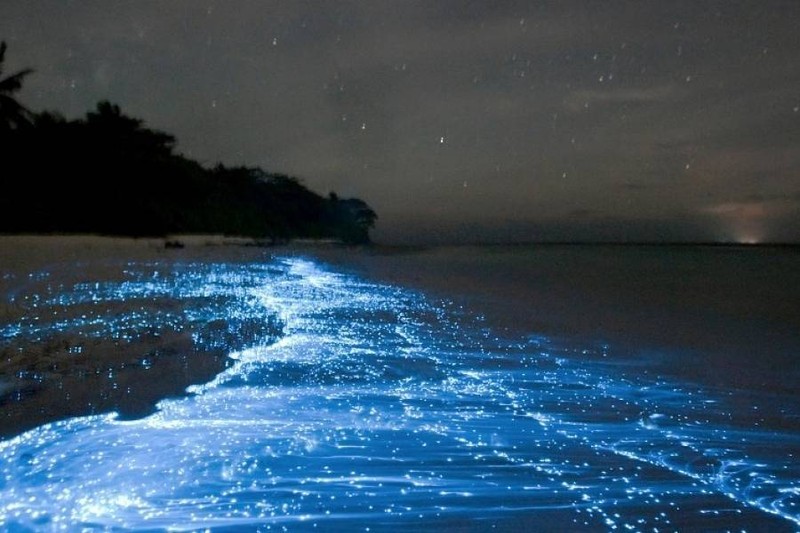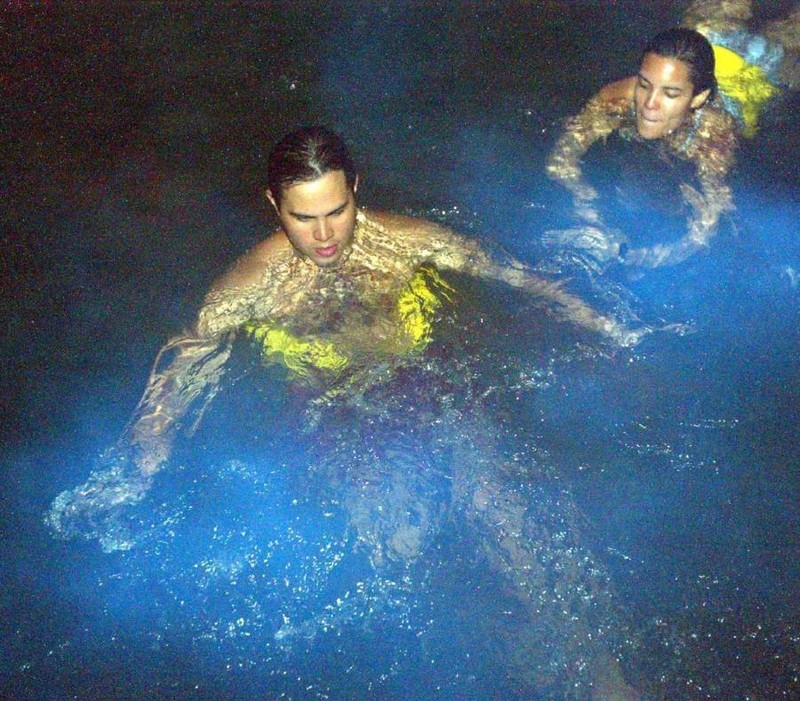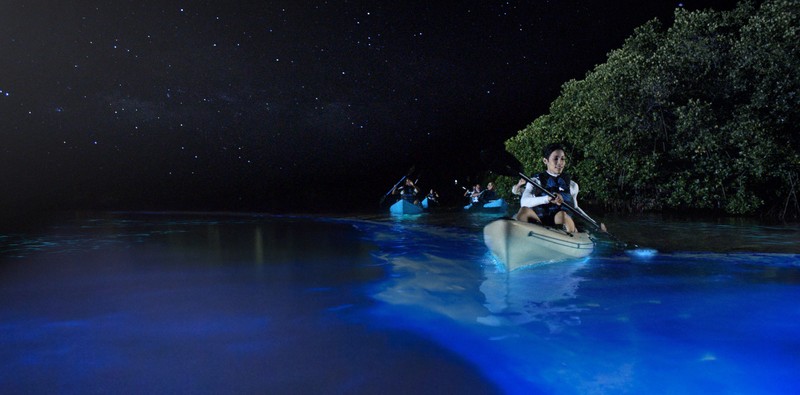Mosquito Bay
Introduction
Text-to-speech Audio
Images
This photo shows the luminous effect of the algae.

At Mosquito Bay, visitors can have the unique experience of swimming in one of the few bioluminescent bays in the world.

Mosquito Bay's beauty doesn't just shine at night; visitors can also enjoy the bay on a sunny day.
.jpg)
In Mosquito Bay, visitors can participat in various activities. The most famous is kayaking in the bioluminescent waters.

Backstory and Context
Text-to-speech Audio
Mosquito Bay, a United States military base in the past, is one of the wonders of the world and supports the economy the island municipality of Vieques, and also of Puerto Rico. This paradisiacal bay was not always a place where tranquility and natural harmony reigned. On its shore lay military mines from the time that it was used as a base by the United States Navy until local citizens protested and successfully removed the military presence from the island. Since those protests, this place has become one of the highest esteemed tourists getaways, because of its beauty and biological value. Mosquito Bay has both an economic and scientific value as it is one of the few bioluminescent beaches in the world and contributes greatly to Puerto Rico's tourism industry.
For about 60 years, Mosquito Bay and the whole island of Vieques was used as a practice base by the United States Army. For more than half century, the people of Puerto Rico endured bombing trials and tests that seriously affected the health and the ecosystem of the living beings that inhabited the island. The protests that formed part of Puerto Rico's social justice movement were prompted by the loss of human life:
"The tragedy of a civilian killed in Vieques by an errant 500-pound bomb destroyed this protective shield, bringing to light the social, economical and environmental injustices and atrocities committed by the U.S. Navy. This tragedy increased the public awareness of how people's lives, beaches, environment, and livelihood had been destroyed." (1)
The inhabitants organized to protest, and after several protests inspired a mass movement for "Peace for Vieques," their purpose was finally successful. Since the United States Navy left Vieques, the island has been protected and named a National wildlife refuge. Resources are now dedicated to maintaining the environment and promoting the health of its indigenous flora and fauna.
The natural environment is a unique feature of the bay, thanks to it, the bay has been named as a world wonder. Its main attraction is due to a very small organism, Pyrodinium bahamense, that converts internal chemical energy into light and creates bioluminescent waters. Mosquito Bay has this organism present in large quantities:
"Mosquito Bay or Puerto Mosquito contains a bioluminescent species of a dinoflagellates named Pyrodinium bahamense that exists in concentrations that are as high as 720,000 per gallon of water" (2).
For this reason, the bay is a well-known tourist attraction and various travel operators organize trips to the bay that permit visitors to see and physically experience swimming in the bioluminescent waters. There are few beaches that have this bioluminescent species of a dinoflagellates and their high concentrations at this bay illuminate the coastline at night, giving what some describe as a magical effect to the water and the beach. For this reason alone, Mosquito Bay is unique. Yet, another attraction of the bay and the whole island of Vieques is its ecology and wildlife. In 2008, an article published in the Journal of Coastal Research explained that:
"Vieques island is now the largest national wildlife refuge in the Caribbean" (3).
Vieques is currently protected as the biggest wildlife refuge of the Caribbean, and Mosquito Bay composes an important part of the protected areas for its many reefs teeming with a diversity of flora and fauna.
Another point of interest about Mosquito Bay is its economic role. Mosquito Bay contributes to the economy in Vieques as it attracts a lot of tourists. The relatively small island of Vieques (measuring 135 km²) is located approximately 14 kilometers from the main island of Puerto Rico. Partly becasue of its separation from the main island and also becasue of its importance as a naturally protected area, a large part of the island's economy depends on tourism and the money that is generated around this industry. The large tourist destinations such as Mosquito Bay support smaller attractions and local markets nearby. It is important to note that places like Mosquito Bay attract visitors that often seek accomodation and car rental on this island and that income encourages the island's economic growth.
Due to the history, flora and fauna, Mosquito Bay has been recognized all around the world. Every year, thousands of people visit Mosquito Bay and the island of Vieques for recreational or research purposes. Certainly, Mosquito Bay offers its visitors a unique Caribbean environment and local history; this region that was once used for military practice is now a protected wildlife refuge and houses one of the wonders of the natural world.
Sources
- Aponte, C. I. (2004). U.S. Navy versus Vieques, Puerto Rico: Social Justice Through Civil Disobedience. Journal of Poverty, 8(4), 59-73. https://doi.org/10.1300/J134v08n04_04
- Mitchell, Lee E. Developing a GIS of the Bioluminescent Bays on Vieques, Puerto Rico, Proceedings. Accessed May 8th 2020. https://proceedings.esri.com/library/userconf/proc04/docs/pap1018.pdf.
- Riegl, B., Moyer, R. P., & Walker, B. K. (2008). A Tale of Germs, Storms, and Bombs: Geomorphology and Coral Assemblage Structure at Vieques (Puerto Rico) Compared to St. Croix (U. S. Virgin Islands). Journal of Coastal Research, 24(4), 1008-1021. https://doi.org/10.2112/06-0814.1
https://images.app.goo.gl/SWh6jk7iJXnLng9X7
https://images.app.goo.gl/48mhDi5kHwdLNpka7
https://images.app.goo.gl/b9rjmCDRXBASo2GK6
https://images.app.goo.gl/TcPZ8yAefAfV5bi36
